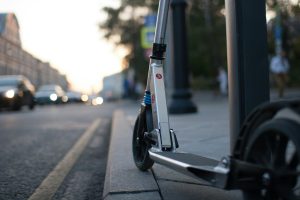We are all on a journey toward a greener future, and embracing sustainable transportation is a crucial part of that adventure. In this article, “What Are The Best Practices For Sustainable Transportation?” we explore how we can collectively reduce our carbon footprint through innovative and eco-friendly travel methods. From integrating electric vehicles into our daily commute to enhancing public transportation systems and promoting cycling and walking, we discuss practical steps and inspiring solutions that pave the way for a more sustainable world. By adopting these practices, we contribute to a cleaner environment and ensure a healthier planet for generations to come. Have you ever found yourself wondering, “What are the best practices for sustainable transportation?” It’s a question we should all be asking, given the increasing concerns about climate change, air pollution, and the overall sustainability of our planet. By understanding how we can contribute to a more sustainable future through our choice of transportation, we can collectively make a positive impact.

Understanding Sustainable Transportation
Before we dive into the best practices, let’s first understand what sustainable transportation actually means. Sustainable transportation refers to any means of moving people or goods that has a low impact on the environment and is affordable, reliable, and efficient. It aims to meet current transportation needs without compromising the ability of future generations to meet theirs.
The Importance of Sustainable Transportation
Sustainable transportation is crucial for several reasons:
- Environmental Protection: Reduces greenhouse gas emissions and air pollutants.
- Economic Benefits: Lowers costs related to fuel, maintenance, and healthcare.
- Social Equity: Provides equitable access to transportation for all.
Key Components of Sustainable Transportation
To achieve sustainable transportation, we must focus on a few key components:
- Energy Efficiency: Utilizing vehicles and fuels that are energy-efficient.
- Pollution Reduction: Minimizing emissions and waste.
- Accessibility: Ensuring everyone has access to transportation options.
- Affordability: Making sustainable transportation cost-effective.
Best Practices for Sustainable Transportation
Now that we have a foundational understanding, let’s explore the best practices individually to see how we can integrate them into our daily lives.
Promoting Public Transportation
Public transportation is one of the cornerstones of sustainable transportation.
Benefits of Public Transport
- Reduces Traffic Congestion: Fewer cars on the road lead to less traffic.
- Lower Emissions: Buses, trams, and trains typically emit less CO2 per passenger compared to private cars.
- Affordability: Generally more cost-effective than owning and maintaining a personal vehicle.
| Public Transportation Modes | Advantages | Examples |
|---|---|---|
| Buses | Less emissions per capita | City Buses, Intercity Buses |
| Trains | Energy-efficient, less pollution | Subways, Commuter Trains |
| Trams | Reduced road congestion | Streetcars, Trolleybuses |
Encouraging Public Transport Use
To ensure more people use public transportation, we can:
- Enhance Accessibility: Improve the reach and frequency of services.
- Affordable Fares: Ensure ticket prices are kept low.
- Comfort and Reliability: Maintain clean and punctual services to attract more users.
Embracing Active Transportation
Active transportation involves human-powered methods such as walking and cycling.
Benefits of Active Transportation
- Health Improvements: Promotes physical activity, reducing the risk of various ailments.
- Zero Emissions: Completely eliminates transportation-related emissions.
- Cost Effectiveness: Little to no cost compared to motorized transportation.
| Mode of Active Transport | Health Benefits | Environmental Impact |
|---|---|---|
| Walking | Boosts cardiovascular health | No emissions produced |
| Cycling | Enhances muscle strength, stamina | Minimal carbon footprint |
Creating Infrastructure for Active Transportation
For active transportation to be truly effective, proper infrastructure is essential:
- Bike Lanes and Paths: Safe routes for cycling.
- Pedestrian Walkways: Well-maintained sidewalks and crosswalks.
- Bike-Sharing Programs: Publicly available bicycles for short-term use.
Transitioning to Alternative Fuels and Electric Vehicles (EVs)
Switching from traditional fuel sources to alternative options can significantly reduce our carbon footprint.
Benefits of Electric Vehicles
- Lower Emissions: EVs produce zero tailpipe emissions.
- Reduction in Fossil Fuel Dependence: Less reliance on oil and gas.
- Energy Efficient: More efficient than internal combustion engines.
| Type of Vehicle | Fuel Type | Benefits |
|---|---|---|
| Electric Cars | Electricity | Zero tailpipe emissions |
| Hybrid Vehicles | Electricity + Fuel | Reduced fuel consumption |
| Hydrogen Cars | Hydrogen | Emissions are water vapor |
Facilitating EV Adoption
To promote the use of electric and alternative fuel vehicles:
- Expand Charging Infrastructure: More charging stations in public and private spaces.
- Incentives and Subsidies: Tax credits and rebates for EV purchases.
- Public Awareness Campaigns: Informing people about the benefits and availability of EVs.
Carpooling and Ride-Sharing
Carpooling and ride-sharing offer a practical solution to reduce the number of vehicles on the road.
Benefits of Carpooling
- Reduced Traffic Congestion: Fewer vehicles result in smoother traffic flow.
- Lower Emissions: Shared rides mean fewer individual car trips and lower emissions.
- Cost Savings: Shared expenses on fuel and tolls.
| Activity | Environmental Impact | Financial Benefits |
|---|---|---|
| Carpooling | Lower emissions per passenger | Shared travel costs |
| Ride-Sharing | Efficient use of vehicle space | Reduced individual fares |
Encouraging Carpooling
To maximize carpooling effectiveness, consider:
- Carpool Lanes: Dedicated lanes to incentivize ride-sharing.
- Carpool Platforms: Apps and services to connect riders.
- Employer Incentives: Workplaces can offer rewards for carpooling.
Urban Planning and Development
Urban planning plays a pivotal role in enabling sustainable transportation.
Smart Urban Planning
- Mixed-Use Development: Combines residential, commercial, and recreational spaces to reduce travel distances.
- Public Transport Integration: Designs cities around public transportation networks.
- Green Spaces: Promotes parks and gardens to improve air quality and encourage outdoor activities.
| Urban Planning Strategy | Benefits |
|---|---|
| Mixed-Use Development | Shorter commutes, reduced emissions |
| Public Transport Integration | Increased use of public transport |
| Green Urban Spaces | Improved air quality, encourages outdoor activity |
Implementing Sustainable Urban Planning
To implement these strategies effectively:
- Involve Communities: Engage residents in planning processes.
- Invest in Infrastructure: Allocate funds to develop sustainable infrastructure.
- Regulatory Policies: Enforce policies that support sustainable development.
Supporting Policies and Legislation
Government policies and legislation are fundamental in advancing sustainable transportation initiatives.
Effective Policy Measures
- Fuel Standards: Implement stringent fuel efficiency standards.
- Subsidies: Financial incentives for using energy-efficient vehicles and public transportation.
- Emission Regulations: Strict limits on vehicle emissions.
| Policy Type | Description | Purpose |
|---|---|---|
| Fuel Efficiency Standards | Regulations on fuel consumption | Reduce overall fuel usage |
| Financial Incentives | Tax credits, rebates for EVs | Make sustainable options affordable |
| Emission Regulations | Limits on pollutants from vehicles | Improve air quality, reduce GHGs |
Advocating for Policy Change
We can:
- Support Advocacy Groups: Participate in groups advocating for sustainable transportation.
- Vote Smart: Elect officials who prioritize environmental policies.
- Engage in Public Dialogue: Raise awareness and participate in discussions about sustainable transportation policies.
Educating and Raising Awareness
Finally, education and awareness are crucial in shifting public behavior towards more sustainable transportation choices.
Sharing Knowledge
- Workshops and Seminars: Organize events to educate people about sustainable transportation.
- School Programs: Integrate sustainability into school curricula.
- Public Campaigns: Use media campaigns to spread awareness.
| Education Activity | Target Audience | Goal |
|---|---|---|
| Workshops | General public, stakeholders | Educate on best practices |
| School Programs | Students | Instill sustainable habits early |
| Public Campaigns | Wider community | Raise awareness, change behavior |
Encouraging Community Participation
We can foster community engagement by:
- Community Events: Host events like car-free days, cycling month, etc.
- Online Platforms: Utilize social media to share tips and success stories.
- Collaborations: Partner with local businesses and organizations to promote sustainable transportation.

Conclusion
So, what are the best practices for sustainable transportation? From embracing public transit and active transportation to transitioning to alternative fuels and supporting urban planning, the options are plentiful and varied. Each of these practices, when implemented thoughtfully and collectively, can lead us toward a future where our transportation systems are not only efficient but also kind to our planet. By promoting policies, raising awareness, and fostering community engagement, we can all play a part in making sustainable transportation a reality.
Let’s commit today to making smarter, more sustainable transportation choices. Together, we can create a greener, healthier, and more sustainable future for all.



